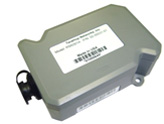|
Primers: What Are Wireless Sensor Nodes?
Sensors are best described as devices that can measure some physical quantity or quality and convert that measurement into signals that can be read by people or instruments. A thermometer is an example of a simple sensor. In addition to temperature, sensors can measure pressure, vibration, motion, and sound, as well as physical and environmental states or conditions. Typically, the sensors gather data and convert that data into digital signals that can be captured, saved, transmitted or evaluated at local or remote locations if they are connected to a suitable communications link.
The communications link can consist of some combination of wireline, radio, or optical technologies that are selected based upon the specific environment, application, and technical requirements. To form a network, a number of discrete elements are required that accept, analyze, and re-direct the messages based upon specific criteria. They can be thought of as traffic signals that provide order and routing for the various signals as they appear. These elements are refered to as Nodes. A device that contains both sensors and performs the nodal function is naturally referred to as a sensor node. When the communications path is wireless (radio links), the name wireless sensor nodes provides a full and accurate description of their capability.
In the TeraHop implementation, the wireless sensor nodes are also equipped with external interfaces to allow the connection of external sensors in addition to the self-contained sensors. The flexible external interfaces can accommodate a virtually unlimited variety of sensors to meet the needs of specific applications. Sensors that detect certain gases, nuclear radiation, temperature, wind speed and direction, or any other measurable quantity can be connected to the wireless sensor nodes and have their readings transferred across the network.
 TeraHop's wireless sensor node, called an PDC, is shown above.
TeraHop's wireless sensor node, called an PDC, is shown above.
|